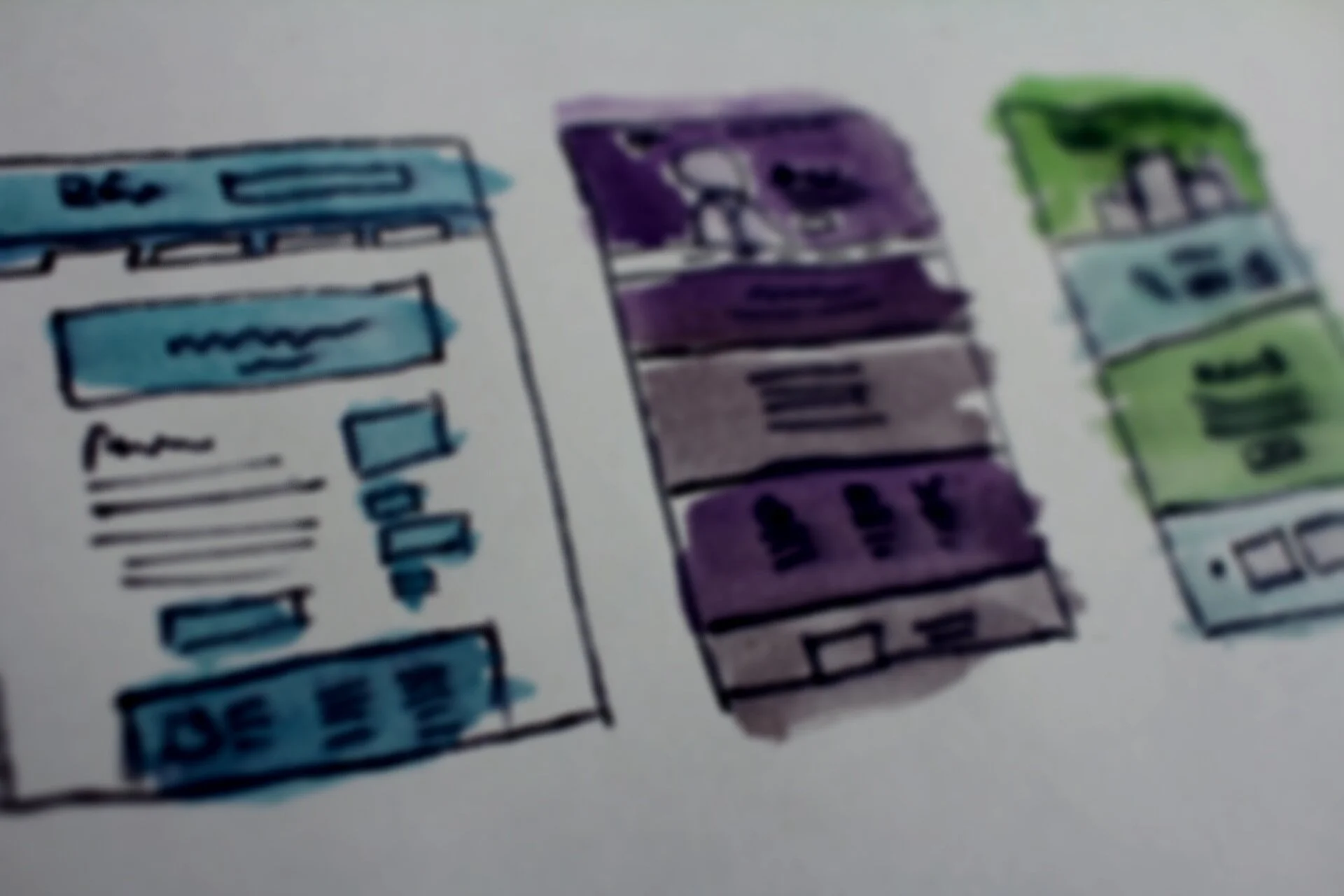Design and Build a Prototype
“If a picture is worth a thousand words, then a prototype is worth a thousand meetings.” (IDEO)
Similarly, the Institute of Design at Stanford (d.school) encourages a “bias towards action”, where building and testing is valued over thinking and meeting.
Prototyping is an approach that moves a project toward action through the production of early, inexpensive, and scaled down versions of the product, program, or service to reveal problems with the current design.
Prototyping brings ideas to life, tests their practicality, and highlights how a sample of end users might think and feel about what you’ve created. In design thinking, designers use prototypes to observe, record, judge, and measure an end user’s general behavior, interactions, and reactions to the overall design.
Prototypes can take many forms, but they should always be a tangible representation of an idea or solution. Simple sketches and storyboards, rough paper prototypes of online interfaces, or role-playing to act out a service are all examples of prototypes. You can also limit a specific prototype to a part of a solution, so that you can test individual features with end users.
By providing approaches for building, testing, and exploring ideas before too many resources get used prototyping can help save both money and time.
Some designers refer to prototypes as ‘low-fidelity’ or ‘high-fidelity.’
Low-Fidelity (low-fi) prototypes are the usual option during the early stages of a project. You can use storyboarding, sketching, models, and role-playing to quickly and inexpensively iterate on a particular solution. Lo-fi prototypes are disposable and should use minimal time and effort.
High-Fidelity (high-fi) prototypes are built by incrementally making changes to a lo-fi prototype by focusing on finer details over multiple iterations. High-fi prototypes will gradually look and operate closer to the finished product. This level of detail will highlight how people will respond to, interact with, and perceive the design.
Videos & Helpful Resources
Use these readings, videos, and other resources to learn more about immersion as a technique for getting to know your end users, clients, or participants.
Rapid Prototyping in Brief
Sketches and prototypes from the perspective of web developers
Practical summary of human-centered design
How they do it at Google
Storyboards, Paper Prototypes, and Mockups
Prototyping for Social Impact
Strategies & Tips for Success
Make your prototyping efforts more effective by keeping these strategies and tips in mind:
Remember that prototypes are supposed to be a quick and easy (and inexpensive) way to test a solution
Just start building - Design Thinking has a bias towards action: just make something
Creating a prototype will help you to think about your idea in a concrete manner, and potentially allow you to gain insights into ways you can improve your idea
Don’t spend too much time making a prototype
Avoid becoming emotionally attached to any specific idea, prototype, or feature
All prototypes should have a central testing issue
Build with the user in mind and test the prototype against expected end user behaviors
Prototypes can be anything that lets you make your ideas tangible and testable.
Prototypes help create a bias towards action (i.e., make rather than think)
Practical Activities & Learning
1) Review your notes from “Immersion & Observation,” “Semi-Structured Interviews,” and “Generating Ideas and Solutions.”
2) Make a list of the ideas that seem like ‘they might work’ for one or more of the people in the photo grid below.
3) Combine and remix the ideas as needed. Choose three ideas to ‘build out’ by making a sketch, storyboard, or lo-fi prototype for each.
In the Field
As a neighborhood consultant, you can submit up to 5 prototyping worksheets for project-relevant prototypes you create. Notes must be shared and summarized to enhance our learning and solutions development efforts.
Prototyping Field Journal Worksheets available on request from aaron[at]akroadvice.com








